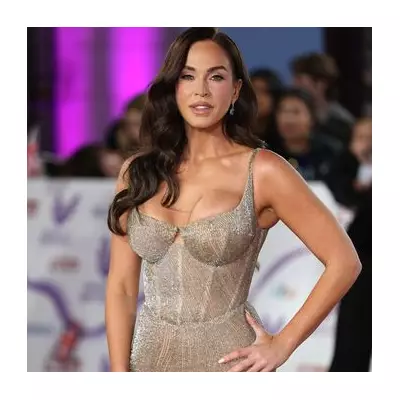
The Rise of the 'Period Drama Face'
In an age dominated by Botox, fillers, and the distinctly modern look of 'iPhone face', casting convincing period dramas has become increasingly challenging for filmmakers. A new cultural conversation has emerged celebrating actors with what's been termed a 'period drama face' – a timeless appearance that seems naturally suited to worlds of candlelight, waistcoats, and sweeping skirts.
This phenomenon, also known as 'reverse iPhone face', is embodied by beloved stars including Cate Blanchett, Keira Knightley, and Olivia Colman. According to Amber Rawlings writing for Hunger Magazine, it describes "anyone who looks like they're straight out of an old painting at the National Portrait Gallery".
What Defines a Period Drama Face?
Those blessed with a period drama face possess classic and natural features that make them seem almost out of place in the 21st century. Beauty expert Gemma Logan from The Foxy Hen explains these characteristics include soft contours, 'rounded' eyes, natural lips without filler, and hair that takes well to vintage styles.
"Period drama face is a playful way to describe a look that feels instantly suited to stories set in earlier centuries," Logan said. "It is the opposite of the modern phone-ready face that feels rooted in the here and now."
Arts and branding expert Chad Teixeira added: "Where 'iPhone face' reflects beauty norms shaped by front-facing cameras, filters, injectables, and hypersymmetry popularised by digital culture, the period-drama face embodies timelessness with features that feel rooted in history."
Modern Faces in Historical Settings
The contrast becomes stark when actors with distinctly modern features appear in period pieces. Recent examples cited include Dakota Johnson in Persuasion, Florence Pugh in Little Women, and Nicole Kidman in The Northman – all noted for smooth foreheads and perfectly white teeth that feel anachronistic to their historical settings.
The discourse gained momentum this week as social media users shared photos of actor Ralph Ineson in The Witch (2015) and Game of Thrones, with one commenter noting: "His is one of the most severe cases of period drama face I've ever seen."
The concept originally emerged in reaction to Stranger Things stars Charlie Heaton and Natalia Dyer, with observers noting their timeless quality. However, the idea isn't new – Susannah Harker's performance as Jane Bingley in the 1995 Pride and Prejudice adaptation remains a classic example, with Reddit users praising her resemblance to "a Grecian statue".
Other notable mentions include Saoirse Ronan in Little Women, Elle Fanning in The Great, Paul Dano described as "born to play a Victorian", and Helena Bonham Carter celebrated as the "ultimate Edwardian girl". Welsh actress Morfydd Clark also received praise, with one fan joking "the Victorians would've drowned themselves in arsenic for a face like hers".
The casting challenges extend to upcoming productions like Emerald Fennell's Wuthering Heights adaptation, where fans have criticised the "weird" and "terrible" casting of Margot Robbie as Catherine Earnshaw and Jacob Elordi as Heathcliff. Similarly, viewers struggled with Michelle Keegan's very modern appearance in BBC One's 2023 series 10 Pound Poms, set in the 1950s.
Even Netflix's wildly successful Bridgerton, while credited with renewing interest in period dramas among younger audiences, features cast members including Phoebe Dynevor and Rege-Jean Page who clearly adhere to modern beauty standards. As one viewer tweeted: "Bridgerton is ultimately about face fillers."
The tension between historical authenticity and contemporary aesthetics continues to challenge filmmakers, proving that sometimes the most crucial casting decision comes down to whether an actor's face truly belongs to another era.





